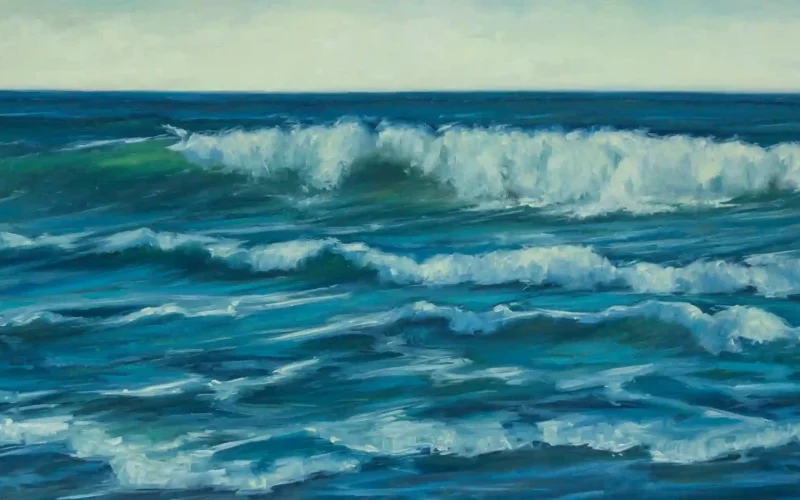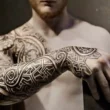In the world of oil painting, the interplay between light and dark is a fundamental aspect that can transform a canvas into a captivating work of art. The balance between light and dark, also known as chiaroscuro, is a technique that has been employed by artists for centuries to add depth, drama, and emotional resonance to their paintings. In this article, we will delve into the art of creating contrast through the harmonious use of light and dark in oil art, exploring its techniques, significance, and impact on the viewer.
The Essence of Chiaroscuro
Chiaroscuro, an Italian term meaning “light-dark,” refers to the technique of depicting the contrast between light and shadow in a painting. This technique is often used to create the illusion of volume, depth, and three-dimensionality on a two-dimensional canvas. Chiaroscuro not only enhances the visual impact of a painting but also adds a dramatic and emotional dimension to the artwork.
Techniques for Achieving Contrast
Achieving the perfect balance between light and dark in oil art requires a mastery of various techniques and considerations:
- Value Range: Understanding the value scale is crucial. Artists must work with a range of values from the deepest shadows to the brightest highlights. This range allows for the creation of form and dimension.
- Gradation: Gradation, the smooth transition from light to dark or vice versa, is a key component of chiaroscuro. Blending and transitioning between values with smooth gradients adds realism and depth to the painting.
- Underpainting: Many artists start with an underpainting, a monochromatic layer that establishes the basic values and composition of the painting. This provides a foundation for building contrast in subsequent layers.
- Highlight Placement: Deciding where to place the brightest highlights and the darkest shadows is a strategic choice. Highlight placement can draw the viewer’s eye to specific areas and emphasize the subject’s form.
- Direction of Light: Consider the direction of light in the scene you are painting. Understanding the angle and source of light helps determine where highlights and shadows fall.
Emotional Impact of Chiaroscuro
Chiaroscuro is not merely a technical exercise but also a powerful tool for conveying emotion and storytelling in art. Here’s how the technique can impact the emotional resonance of a painting:
- Drama and Tension: The stark contrast between light and dark can create a sense of drama and tension. It can draw the viewer’s attention to specific elements and evoke a heightened emotional response.
- Mystery and Depth: Chiaroscuro can infuse a painting with an aura of mystery and depth. It invites viewers to explore the hidden details within the shadows and encourages contemplation.
- Focus and Impact: By carefully controlling the contrast, artists can guide the viewer’s gaze to the focal point of the painting, enhancing the impact of the subject.
- Realism and Dimension: Chiaroscuro adds a sense of realism and three-dimensionality to art, making objects appear solid and tactile. It breathes life into the canvas, making the subject feel more tangible.
Famous Examples of Chiaroscuro
Chiaroscuro has been used by many renowned artists throughout history to create iconic and memorable works of art. Some famous examples include:
- “The Calling of Saint Matthew” by Caravaggio: Caravaggio, a master of chiaroscuro, used dramatic light and shadow to depict the moment when Jesus calls Matthew to become one of his disciples. The stark contrast between light and dark emphasizes the divine intervention in an everyday scene.
- “Girl with a Pearl Earring” by Johannes Vermeer: Vermeer’s use of soft chiaroscuro adds depth and a sense of intimacy to this portrait. The contrast between the girl’s face and the dark background draws attention to the luminous pearl earring.
- “Self-Portrait” by Rembrandt: Rembrandt was a prolific user of chiaroscuro in his self-portraits. His paintings often feature dramatic contrasts that highlight the aging process and the emotional depth of his subjects.
Chiaroscuro in Modern Art
Chiaroscuro remains a relevant and widely used technique in contemporary oil painting. Modern artists continue to explore its potential for adding depth, emotion, and visual interest to their work. Whether creating portraits, still life, or landscapes, the skillful use of light and dark remains an essential element of oil art.
Experimentation and Expression
While traditional chiaroscuro techniques are invaluable, artists are encouraged to experiment and find their unique approach to creating contrast in oil art. There is no one-size-fits-all method, and personal expression plays a significant role in the outcome. As artists explore and push the boundaries of chiaroscuro, they contribute to the ongoing evolution of this timeless technique.
Conclusion:
Chiaroscuro is more than a technical skill; it is an art form in itself, a dance of light and shadow that brings paintings to life. The mastery of contrast is a journey that requires patience, practice, and a deep understanding of how light and shadow interact. Whether used to convey drama, evoke emotions, or add depth and realism to a painting, chiaroscuro remains a powerful and enduring aspect of oil art. Artists who embrace this technique engage in a visual dialogue with the viewer, inviting them to explore the captivating world of light and dark on the canvas.











